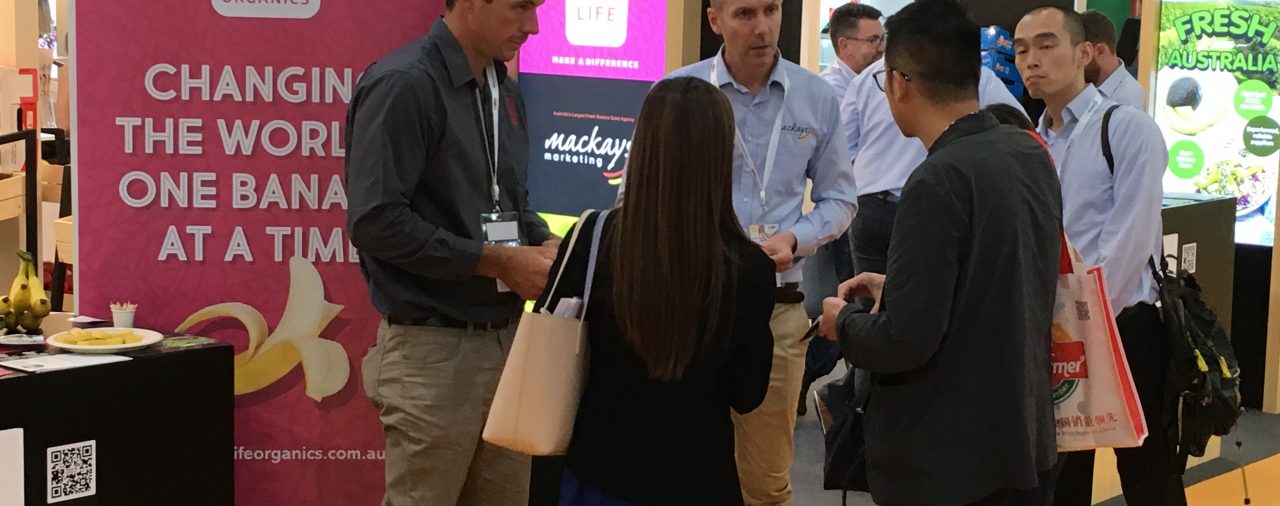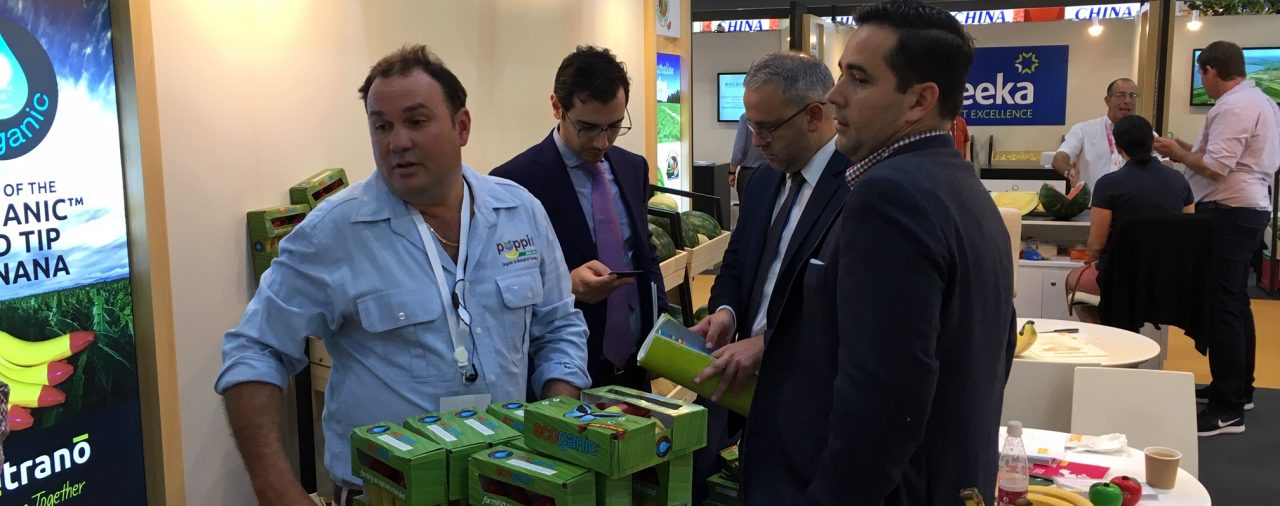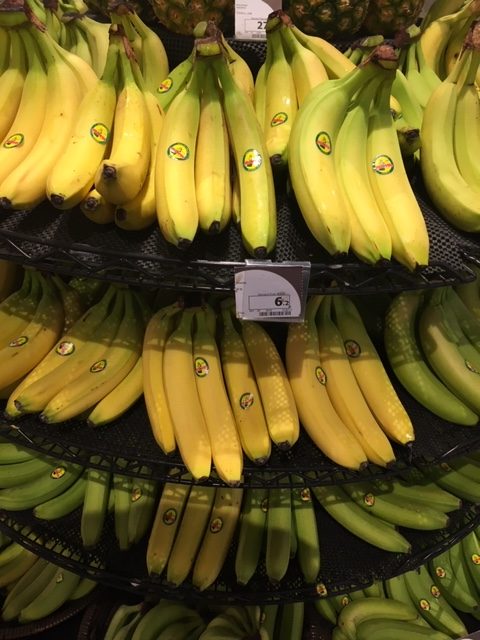Australian Bananas were featured as part of Asia Fruit Logistica this year, with four companies coming on board to help investigate options for exports
Eco Bananas, Nutrano, Good Life Organics, MacKays Marketing and banana levies invested in this Hong Kong trade show to capture market information, build awareness and develop relationships.
In 2017/18 Australia sold 388,000 tonnes of bananas, but only 0.04% was exported.
Eco Bananas are one of the few Australian banana companies who currently export their produce.
As a result of the trade mission, they identified several opportunities to increase their business, with industry representatives from Japan, Malaysia, South Korea and China showing interest in the well-known red wax-tipped fruit.
Good Life Organics reported some an initial interest in Australian organic bananas from Hong Kong, China and India.
Asia Fruit Logistica 2019 confirmed that there are less opportunities for conventional Cavendish bananas when it comes to export, mainly due to the current limited point of difference from existing Cavendish offerings. Other issues were the relatively high cost of Australian conventional bananas and some current trade restrictions.
Broader export insights
It was noted that the ‘Clean and Green’ pitch for produce was not necessarily unique to Australia. In fact, many countries claimed the same credentials, particularly Costa Rica. The Australian banana delegation formed the opinion that it wasn’t enough to distinguish Australia from other exporting nations. However, the level of trust might be greater with Australia than elsewhere.
At both Asia Fruit Logistica and the reverse trade mission (held in Melbourne as part of Hort Connections), retailers and importers were reluctant to talk about ripening and supply chain.
This is understandable considering the commercial sensitivity of the information.
Hong Kong happenings
While in Hong Kong, the ABGC’s representative on the trade mission, CEO Jim Pekin, presented to Austrade officials in each of the Asian countries and received market insights from those involved.
The banana delegation – through their agents – also investigated bananas at different types of produce stores. This included the traditional Hong Kong wet market, value stores, mainstream stores, convenience stores and several premium/lifestyle stores. They also visited a multi-floor ripening room, where the Australian bananas were ripened for the Asia Fruit Logistica.
The banana delegation met with experienced Australian exporters in table grapes, citrus, mangoes, apples, avocados and vegetables in Hong Kong.
Many of these were in Hong Kong mostly (or in some cases, solely) to meet with and build on relationships with their customers. The table grapes and citrus growers, in particular, were enthusiastic about the opportunity for Australian banana exports, due to their industries’ export success.
Table grapes and citrus now export 60% and 35% of their production.
Findings for Australian bananas
The current opportunities for Australian bananas in Asian markets appear to be limited to high value, low volume products, such as Eco Bananas and organic bananas. The key recommendations were that moves to export conventional bananas should be considered a long-term activity and that export steps forward should be made. It was also recommended that a much better understanding of a range of markets, their supply chains and retailers is needed. If Australian banana companies are interested in export, they need to begin spending time travelling to these markets and forming relationships with other businesses and potential customers. The role of government officials in developing these relationships was noted. In Australia, business to business commercial trade makes sense. However, in many Asian countries, the inclusion of government officials is the starting point for business.
The banana delegation also recommended that the industry seek to take the steps necessary with Hort Innovation and the Australian Government to eventually obtain market access for bananas to China. This firstly requires an industry-agreed Banana Export Development Plan, some industry participants being export capable for that market and then gaining a spot on the Department of Agriculture’s list of priority markets/industries to be negotiated. This last step could take ten years.
It is hard to say what changes may occur within international banana markets in the future and what opportunities there might be for the Australian banana industry, but regardless it’s clear that more needs to be understood about these overseas markets for the Australian industry to better position itself.
Asia Fruit Logistica was held from September 3-6 2019.
This is article is a summary of a report compiled by the ABGC’s CEO – and representative on the trade missions – Jim Pekin. The full report will soon be posted online at Hort Innovation’s Banana Fund page.




